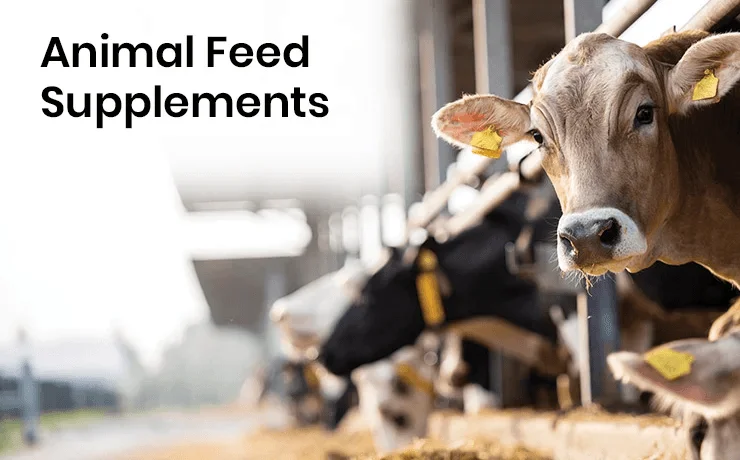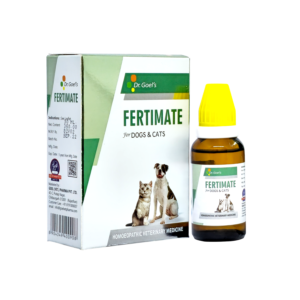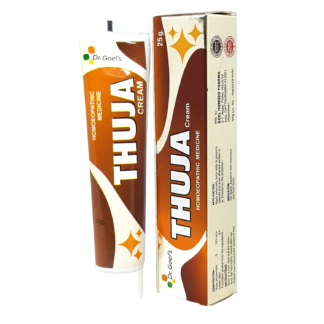A Comprehensive Exploration of Reproductive Health in Pet Dogs and Cats

Pets Reproductive Health, especially that of dogs and cats, is crucial to their overall wellbeing and helps to maintain pet populations. Understanding the complexities of the reproductive system is essential for responsible pet owners and veterinarians to give the right care and support. Welcome to the field of veterinary medicine, where an animal’s overall health is of utmost importance. We will cover a wide range of topics related to reproductive health in dogs and cats in this extensive blog post, including the oestrus cycle, heat signs, uterine health, uterine diseases, reproductive efficiency, diagnosing reproductive issues, and available treatment options.
What is reproductive Efficiency in Pets: How does it affect breeding.
Pets’ capacity to reproduce successfully while maintaining top health all along the process is referred to as reproductive efficiency. Pets Reproductive Health efficiency is influenced by a number of variables, including genetics, nutrition, age, and general health. Enhancing reproductive effectiveness and lowering the frequency of genetic disorders require responsible breeding methods.
- Breeding Management: Breeding Pairs should be carefully chosen based on their genetic compatibility and attributes for effective breeding management. Breeders who practice responsible breeding strive to reduce the danger of genetic problems while also improving the breed. In addition to preventing unwanted litters, controlled breeding procedures lighten the load on animal shelters.
- Nutrition: It’s critical for pets’ reproductive health to keep adequate nutrition. The growth of healthy children is supported by a proper diet that is loaded with vital nutrients and works to ensure the mother’s health during pregnancy. Additionally, breeding success depends on keeping your physique in top condition.
- Age and Timing: Different dog and cat breeds have different ideal ages for mating. Physical maturity and the absence of any underlying health issues that can affect fertility are requirements for breeding animals. For effective conceptions, it is also crucial to comprehend the timing of the female’s oestrus cycle and the best breeding times.
What is Estrus Cycle: Know More About Heat Cycle in Dogs and Cats.
Female dogs and cats’ oestrus cycles, commonly referred to as the heat cycle, are an essential aspect of the reproduction process. It is the time when a female can possibly get pregnant. Depending on the animal’s species and breed, the length and frequency of the oestrus cycle can change.
In dogs, the oestrus cycle is divided into four phases:
- Proestrus,
- Oestrus,
- Dioestrus, and
- Metoestrus.
The female releases a discharge fluid during the proestrus phase, which attracts male canines but prevents mating. Oestrus, the fertile phase that comes after proestrus and is marked by a lighter discharge and a receptive attitude toward male dogs, follows proestrus. Regardless of whether mating took place, the female’s reproductive system gets ready for pregnancy during the phase after oestrus, known as dioestrus. The female reproductive system is dormant during the resting phase known as metoestrus.
On the other hand, cats can experience numerous oestrus cycles during the breeding season since they are polyoestrous. While cats’ oestrus cycle is marked by numerous and repeated cycles throughout the breeding season, unlike dogs, they do not have discrete phases.

What Are Signs Observed During Heat Period in Dogs:
The symptoms of being in heat might differ from dog to dog, but typical symptoms include:
- Swollen Vulva: The vulva swells and becomes more noticeable during the proestrus phase, indicating the start of the heat phase.
- Vaginal Discharge: During proestrus, a female dog may produce a bloody discharge that gradually lightens in colour as the cycle moves into oestrus.
- Frequent Urination: Dogs in heat may urinate more frequently because they mark their urine to let male dogs know they are in heat.
- Increased Affection and Restlessness: Female dogs in heat may show heightened devotion for their owners and show signs of restlessness or anxiety.
- Tail Position: Dogs that are in oestrus may hold their tails to the side to show that they are ready to mate.
So, What are the Common Uterine Problems in Pets?
Let’s first clarify what the uterus actually is before delving deeply into its issues. In female dogs and cats, the uterus, commonly referred to as the womb, is an essential reproductive organ. Its main job is to create a supportive environment for embryo growth during pregnancy. Many things, including as infections, tumours, and congenital anomalies, can harm the uterus’ health. The following common conditions can affect uterine health:
- Pyometra: Pyometra is a serious disorder in which the uterus develops an infection, causing pus to collect. This potentially fatal illness frequently affects female non-spayed dogs and cats and calls for prompt veterinarian care.
- Uterine Tumours: The uterus may develop benign or malignant tumours, which could interfere with its regular operations and necessitate surgical treatment.
Uterine prolapse is a significant but uncommon disorder that can happen during labour or late in a pregnancy. It includes the uterus protruding out through the vagina and poses serious hazards to both the mother and the developing child
- Metritis: The inflammation of the uterus is known as metritis. This is caused by bacteria which may invade the otherwise healthy uterus during any infectious attacks.
For female dogs and cats to be healthy, owners must be aware of the warning indications of uterine problems and seek immediate veterinary assistance.

Figuring it out: Apt Diagnosis.
Pet reproductive issues must be identified by a thorough veterinary examination, which may entail a variety of diagnostic methods. These may consist of:
- Physical Examination: An in-depth physical examination of the animal can reveal important information about its reproductive health. The veterinarian will evaluate the reproductive system’s health and search for any anomalies or infections
- Blood Tests: Blood tests can be used to detect infection indications or hormone abnormalities that could be harmful to reproductive health.
- Imaging Studies: Radiographs (X-rays) and ultrasounds can produce images of the reproductive organs that can be used to spot tumours, cysts, or other abnormalities.
- Vaginal cytology: To establish the oestrus cycle stage and spot any infection-related symptoms, vaginal cell samples are examined under a microscope.
Culture and Sensitivity: When an infection is suspected, a culture and sensitivity test can assist pinpoint the precise bacterium that caused the infection and pinpoint the best antibiotic course of action.
Way Forward: Treatment Protocols
The diagnosis and severity of a pet’s reproductive ailment will determine the appropriate course of treatment. Typical methods of treatment include:
- Treating the root cause of Diseases such as Pyometra: The rapid removal of the infected uterus, also known as an ovariohysterectomy (spaying), is the main treatment for pyometra. This is the most efficient technique to get rid of the infection and stop it from coming again.
- Uterine Tumours: Surgery may be used to remove uterine tumours, and in some circumstances, an ovariohysterectomy may be essential to stop additional complications.
- Medicines & Antibiotic Therapy: This involves utilizing medications to address infections causing infertility in dogs and cats.
Anti-Inflammatory Drugs helps in managing inflammation in the reproductive tract to improve fertility. Whereas, Fertility Drugs, using medications It helps enhance fertility in breeding animals.
To control the infection and aid the pet’s recuperation in cases of uterine infections, the proper antibiotic therapy is given. Uteromate drops, a homeopathic treatment, can be used to approach issue holistically.
- Hormonal Therapy: In some cases of reproductive diseases, hormonal therapy may be used to control hormonal imbalances or the oestrus cycle.

A critical component of pet dogs and cats’ general wellbeing and a factor in the sustainability of pet populations is their reproductive health. Responsible pet ownership requires knowledge of the oestrus cycle, the ability to spot female heat symptoms, and the uterus’s potential health problems. Pyometra, uterine tumours, and uterine prolapse are uterine diseases that require immediate veterinary care in order to save the lives of our cherished pets.
Responsible breeding techniques, wholesome feeding, and knowledge of the timing and age factors for successful pregnancies are just a few of the many facets of the multidimensional idea of reproductive efficiency in dogs. Diagnostic tools for reproductive issues include routine veterinary check-ups, physical exams, blood tests, imaging studies, and vaginal cytology. Treatment regimens for reproductive ailments include surgery, antibiotic medication, and hormone therapy.
By putting our Pet’s reproductive health first, we contribute to their general well-being and encourage responsible pet ownership. In addition to improving their quality of life, fostering fertility in pet dogs and cats also assures that the unique relationship between people and their animal companions will endure for future generations.
 Australian Shepherd
Australian Shepherd Beagle
Beagle Belgium Shepherd
Belgium Shepherd Bernese Mountain Dog
Bernese Mountain Dog Border Collie
Border Collie Boxer
Boxer Bulldog
Bulldog Cavalier King Charles Spaniel
Cavalier King Charles Spaniel Chihuahua
Chihuahua Cocker Spaniel
Cocker Spaniel Dachshund
Dachshund Doberman Pinscher
Doberman Pinscher Dogo Argentino
Dogo Argentino French Bulldog
French Bulldog German Shepherd
German Shepherd Golden Retriever
Golden Retriever Great Dane
Great Dane Himalayan Shepherd
Himalayan Shepherd Indie Dogs
Indie Dogs Labrador Retriever
Labrador Retriever Pakistani Bully
Pakistani Bully Pembroke Welsh Corgi
Pembroke Welsh Corgi Pitbull
Pitbull Pomeranian
Pomeranian Poodle
Poodle Pug
Pug Rottweiler
Rottweiler Shih Tzu
Shih Tzu Siberian Husky
Siberian Husky Yorkshire Terrier
Yorkshire Terrier Abyssinian
Abyssinian American Bobtail
American Bobtail American Shorthair
American Shorthair Balinese Cat
Balinese Cat Bengal Cat
Bengal Cat Birman
Birman Bombay Cat
Bombay Cat British Longhair
British Longhair British Shorthair
British Shorthair Burmese Cat
Burmese Cat Devon Rex
Devon Rex Exotic Shorthair
Exotic Shorthair Himalayan Cat
Himalayan Cat Maine Coon
Maine Coon Oriental Shorthair
Oriental Shorthair Persian Cats
Persian Cats Ragdoll
Ragdoll Scottish Fold
Scottish Fold Siamese Cat
Siamese Cat Siberian Cat
Siberian Cat Sphynx Cat
Sphynx Cat


























































